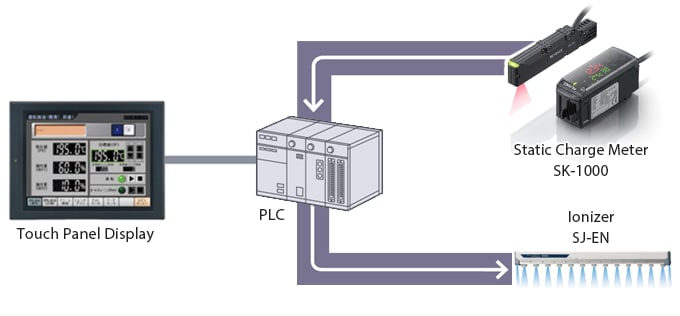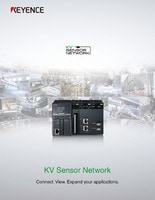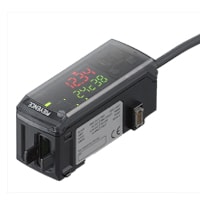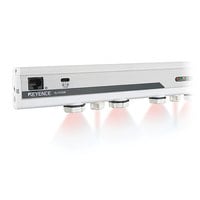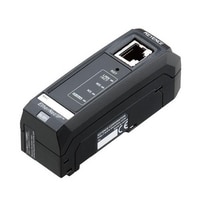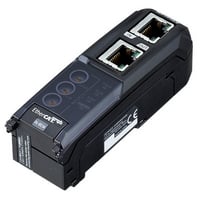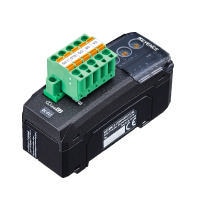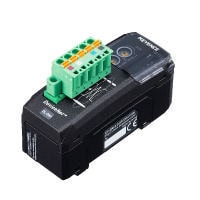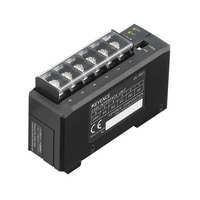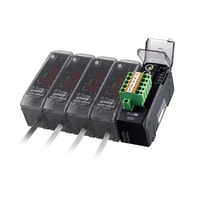Static Electricity Eliminators
This page introduces KEYENCE’s lineup of static electricity eliminators with communication functionality in addition to the supported networks and connection examples.
- Lineup of static electricity eliminators with communication functionality
- Connection example
- Network example
- Supported networks
- Typical connection example
Lineup of static electricity eliminators with communication functionality
Static electricity eliminators with communication functionality
DL Series communication units
Connection example
DL Series network communication units can be used to connect D-bus–compatible sensors (such as the SK-1000).
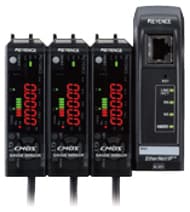
- Multiple SK-1000 devices can be connected to a single communication unit.
- Cannot be connected together with IL/IG/IB/GT2/GT Series D-bus–compatible displacement sensors or FD-S/FD-MH Series flow sensors.
Connecting the SJ-EN Series to a network requires a dedicated cable connected to the RS-485 communication interface on the ionizer.

Network example
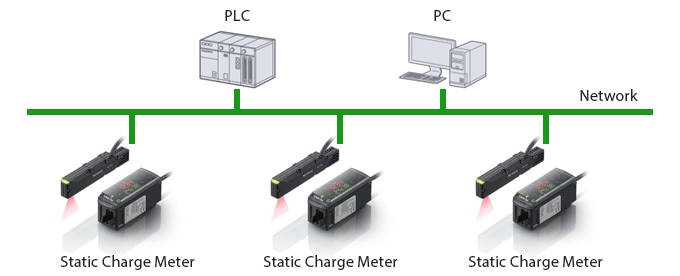
- A network-compatible unit or board is required for PLCs and PCs.
- A 1:1 connection is used for connections via RS-232C.
Supported networks
| Series/Model | Field network | Other communication functions | ||||
|---|---|---|---|---|---|---|
| EtherNet/IP® |
DeviceNet® |
CC-Link | EtherCAT® |
Ethernet TCP/IP |
RS-232C RS-422A/485 |
|
| Multi-Sensing Ionizer SJ-F700 Series |
Field network
—
|
—
|
—
|
—
|
Other communication functions
✓
|
—
|
| Electrostatic Sensor SK-1000 |
Field network
✓
(DL-EP1) |
✓
(DL-DN1) |
✓
(DL-CL1) |
✓
(DL-EC1A) |
Other communication functions
—
|
✓
RS-232C (DL-RS1A) |
| Ionizer SJ-EN Series |
Field network
—
|
—
|
—
|
—
|
Other communication functions
—
|
✓
RS-485 |
| Ionizer SJ-H Series |
Field network
—
|
—
|
—
|
—
|
Other communication functions
—
|
*
|
Contact KEYENCE for information on connecting the SJ-H Series to a network.
Typical connection example
Connecting to a network makes it possible to collect and manage various information from ionizers and electrostatic sensors. This enables monitoring of static electricity conditions at various locations for creating the optimal production environment.
The following example includes a network-connected ionizer and electrostatic sensor.
Visualizing the effectiveness of static elimination measures
With conventional systems, static electricity elimination measures have to be implemented based on past examples or trial and error. With this system, however, the effectiveness of static elimination measures can be visually determined.
Moreover, connecting ionizers and electrostatic sensors to the PLC allows for centralized management including electrostatic condition monitoring and ionizer setting adjustment.
